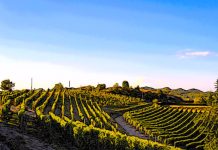Too much plastic on fruits and vegetables, social campaign #svestthefruit starts to reduce it.
A Styrofoam tray and foil wrap to seal it. This is what fruits and vegetables sold in supermarkets increasingly look like. Even the individual fruits. Excessive reliance on packaging (although for organic there is a reason, as we shall see), against which environmentally conscious consumers have taken action.
Starting in Spain, the protest campaign using social networks has also arrived in Italy-led by greenme.it. All consumers are invited to post on social media, with the hastag #svestilafrutta and the tag @greenme_en, photographs of the packaged fruit and vegetables offered in supermarkets, also indicating the point of sale.
The call to reduce plastic packaging, especially when unnecessary, is accompanied by a denunciation of the state of the seas and the fish that inhabit them. The invasion of plastic bottles and fragments of the decaying plastics ingested by fish even risks moving up the entire food chain, ending up on our plates. With harmful health consequences.
The specificity of the organic sector in the supermarket
However, the desire to buy fresh produce without packaging at the supermarket suffers from a paradox. If for conventional produce it is possible to choose the bulk ones and leave the packaged ones on the shelf, when it comes to buying organic fruits and vegetables there is no alternative, the only version offered is the one enclosed in packaging (often cardboard and plastic).
A mode in conflict with the environmentalist spirit of organic farming, one would say, but precisely related to it. As Paolo Carnemolla, president of Federbio, explains to Great Italian Food Trade, in order to sell organic fruit and vegetables without packaging, the entire store must be certified with the organic standard, and keep organic fruits of the earth at an appropriate distance from those obtained through integrated agriculture. An aggravation, not only in cost but also in management, that leaves packaging to prevail.
Professional journalist since January 1995, he has worked for newspapers (Il Messaggero, Paese Sera, La Stampa) and periodicals (NumeroUno, Il Salvagente). She is the author of journalistic surveys on food, she has published the book "Reading labels to know what we eat".








